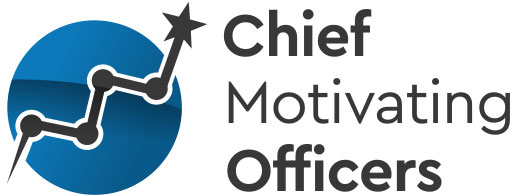Guest Author: Chelsey Whitworth, MS
GOALS for Autism, Inc.
in partnership with
Shannon Biagi, MS, BCBA
Chief Motivating Officers

According to the Merriam-Webster Dictionary, the term “engagement” is defined as:
- An arrangement to meet or be present at a specified time and place.
- Something that engages.
- The act of engaging or being engaged.
For a word used so often in businesses, an analysis of the definition provides some interesting insight into the trouble with the concept of “engagement”. If there’s anything that high school English class taught me, it’s that using the defined word (“engage”) in the definition of the word itself is a big no-no. And the only definition that does not use the word to define itself focuses on simply showing up! Furthermore, none of these definitions of engagement have any acknowledgement of businesses or employees, and yet, those of us in upper management positions are constantly bombarded with new ways to “engage” our staff. But in the context of an organization, and with only self-referential definitions to guide us, what IS “engagement”?
My inbox is filled daily with new webinars or articles on how to “engage” staff. As I view these materials, it becomes clear that engagement of staff has no consistent definition. Instead, the webinars or articles address retention problems, interaction between staff and clients, management check-ins, etc. – anything BUT “engagement”. So, what does engagement in a workplace really mean, from an OBM perspective? In the authors’ opinion, absolutely nothing. It’s often used as a useless buzzword; an umbrella term used by corporations to justify staff performance levels, and for management consultants to sell fancy evaluations and trainings.
However, a different question can be posed to get more useful, actionable information: what does engagement mean in my workplace? In my workplace, the word alone, again, means nothing. But when asked “What does engagement look like?”, behaviors and outcomes become the focus – treatment integrity, meeting billable requirements, closed-loop communication, and participation in company events, to name just a few. The difference between these concepts and engagement is that these are observable and measurable behaviors or outcomes when we operationally define them. It’s much easier to define what meeting billable requirements looks like rather than just pointing the finger at “engagement”. These subcategories end up being the staff behaviors that we’re actually looking to measure. Not “engagement”.
Focusing on the behaviors and outcomes that fall under the term “engagement” serves a number of purposes for leaders in an organization.
- It allows us to set clear expectations with employees on how we want them to behave upon hire. Our “engagement” behaviors become the company culture; “how we do things around here”.
- We can provide specific and actionable feedback to employees and managers when “engagement” drifts, which is tied to increased employee satisfaction.
- Diagnostics become more targeted: we’re not looking to increase the invisible “engagement” numbers, we’re looking to increase communication, feedback, or session fulfillment, for example.
- Interventions become less intimidating, more targeted, and more effective, because they are operationalized. More like a precise surgeon getting at the root of the issue, rather than taking a generic painkiller that will hopefully numb the problem away.
In homage to the great Inigo Montoya, you keep using the word engagement, but it does not mean what you think it means. Think about what it looks like for your organization. Ask the CEO. Ask multiple departments. Ask your entry level staff, managers, and even your clients! You’ll receive different answers from everyone. Take their responses and determine what you’re actually looking to observe when we use the word “engagement”, measure, and then improve those behaviors with intervention.

Guest Author: Chelsey Whitworth is the Director of Clinical Business Operations at GOALS for Autism, Inc. and has worked in the field of Applied Behavior Analysis for over 3 years. She has a Bachelor’s degree in Biological Anthropology from University of California, Santa Barbara and a Master’s degree in Applied Behavior Analysis from National University. Chelsey lives in Sacramento with her black cat, Nox. In her free time, she enjoys cooking, true crime podcasts, and going to the gym.
In her OBM work, Chelsey is acting in a human resources role and has been implementing projects related to training and development, strategic planning, and performance management in her current job at GOALS. CMO is proud to support Chelsey and the team at GOALs in improving their organization!


